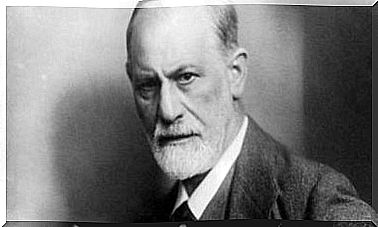The Relationship Between Body, Mind And Meditation

There is a lot of literature on meditation and its benefits. While meditation was once a novelty from the East, it is now something many people in the West have adopted as a habit. What some may not know is that there is a deep relationship between body, mind and meditation.
There are many benefits of this habit for those who do it on a daily basis. Today we will talk about how and why it works. In other words, we’ll talk about the changes that occur in the brain and body when you meditate daily.
Somehow meditation shapes the brain which, as a result, influences our emotions and our bodies. In order to understand how the mind, body and meditation interact, there are some technical aspects that we need to discuss. Let’s see what these are.
Welcome to the fascinating world of the brain
Here are the brain areas that participate in the meditation and the way they work:
- The lateral prefrontal cortex is the brain structure that allows us to gain a more rational perspective of things. The lateral prefrontal cortex is part of the regulation of emotional experiences and limits the tendency to take things personally. This area is commonly known as the evaluation center.
- The medial prefrontal cortex is the part of your brain that constantly talks to you about yourself: your experiences, your ideas, and your goals. It processes all information related to you and your relationships with the people around you. We know it as the self-reference center. It consists of two parts. One is part of the increase in rumination and anxiety. The other plays a very important role when it comes to empathy.
- The insula is the part of the brain that deals with bodily sensations and experiencing emotions in the sensory field. The insula is part of a system that helps modulate the level of stimuli depending on the sensations in your body.
- The amygdala is our biological alarm system, also known as the fear center. It is directly related to the fight or flight response in situations we perceive as dangerous.

How does the brain work without meditation?
The brain that does not meditate can get stuck in itself, because it relies heavily on the self-reference center.
In addition, this center also reconnects with the fear center, creating strong neural connections between the two. In this case, it is the self-reference center that processes most of the information received.
This dependence explains why some people become addicted to negative thoughts. This happens because the connection between the self-reference center and the evaluation center is weak.
When we increase the work capacity of the evaluation center, there is a significant decrease in activity in the self-reference center, the part that, as mentioned above, tends to take things personally.
This also improves the activity of the part involved in understanding other people’s feelings. In fact, this is how it assimilates all the information it receives: throwing out erroneous data and reducing excessive thinking and worry.
The brain in meditation
A number of things happen in the brain that meditates on a regular basis. For example, the connection between the self-reference center and the fear center gradually begins to break. This reduces the strength of the individual’s fear responses. This partly explains why anxiety decreases when we meditate regularly.
There is even a stronger neuronal connection between the evaluation center and the fear center. This means that when a bodily sensation of fear of something potentially dangerous reaches the brain, it is able to evaluate it rationally rather than automatically going into a fear response.
In addition, this helps you to stop creating hypotheses about what is going on in their lives (rumination, or worrying).
Empathy
In the brain of a person who meditates regularly, there is a great increase in the connections between the self-reference center and the empathic center.
Through meditation we activate the part of the brain that is involved in experiencing empathy: the insula. In this way we are better able to recognize the mental state of other people, their desires, dreams and motivations.

Body, Mind and Meditation
The decrease in negative emotions seems to directly affect the immune system. In addition, regular practice of meditation slows down the heart and dilates blood vessels.
Certain studies have found a link between transcendental meditation and lowering blood pressure. In addition, this use is also good for the endocrine system. When you meditate, endorphins are released, the so-called happiness hormones. In this way you manage to keep the level of stress hormones at an acceptable level.
As you can see, body, mind and meditation go hand in hand. For those who want to start meditating, our advice is to do it under the guidance of experts and to be consistent. We can take advantage of our neuroplasticity, through habit and daily practice.









